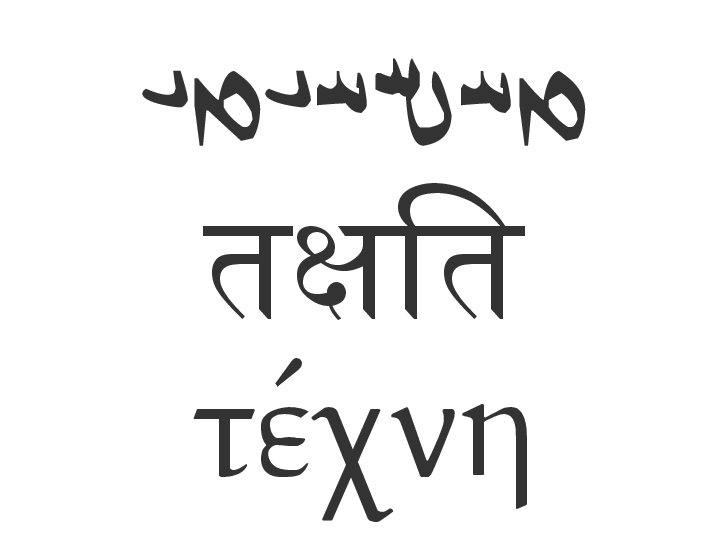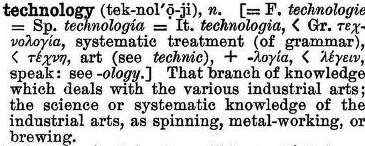From Technology to Health Information Technology
“Open the pod bay doors, HAL!”
“I’m sorry, Dave.
I’m afraid I can’t do that.” This scene is a turning point in the 2001: A Space Odyssey movie (1968) and novel when HAL 9000, the main computer of the spaceship and a symbol of top-notch technology, defies Dave Bowman the captain and main character of the story, suggesting that it was the one who plotted the murder of the crew in staged accidents. Also, HAL confesses that it intended to take control of the mission itself alone because it was programmed to make sure the mission will succeed while it considered the others to be risks to this goal.
2001: A Space Odyssey

What is technology? The answer to this question has the potential to alter fundamentally both the scope and the approach of health information technology evaluation activities. It might not be the case that there exists only a unique universally accepted answer to this question; at the same time, it might be high expectation if we think that any answer would draw crisp boundaries around the technology definition in the lexical landscape. It is out of our agenda to find an answer or survey on different answers to this question, but the scales suggested by some answers might help us to take a more insightful approach toward the topic of health information technology evaluation .
The word technology, from its deep etymological root, teks-na- meaning to craft or weave in the Proto-Indo-European language [1] (Harper, 2015), to its Ancient Greek incarnation as tekhnologia (τεχνολογία) (Harper, 2015) , to its more contemporary definitions such as the Webster’s definition as “a description of arts; or a treatise on the arts” (Webster, 1828) , to its early twenty-century definitions as in Century Dictionary, which gives “spinning, metal-working, or brewing” as examples of technology (Whitney, 1902), and finally to its definition in the latest dictionaries as “the use of science in industry, engineering, etc., to invent useful things or to solve problems” or “a machine, piece of equipment, method, etc., that is created by technology” (Merriam-Webster, 2015), always have had the explicit meaning or connotation of creating something useful, while this something has varied from tangible artifacts in older definitions to both tangible and non-tangible things in the current ones.

Along these linguistic attempts to define what is technology, some of the philosophers, usually under the general topic of philosophy of technology, reflected upon the essence of technology. Heidegger believes:
We ask the question concerning technology when we ask what it is. Everyone knows the two statements that answer our question. One says: Technology is a means to an end. The other says: Technology is a human activity. The two definitions of technology belong together. For to posit ends and procure and utilize the means to them is a human activity.
The Question Concerning Technology
This philosophical contemplation about the essence of technology suggests a quite broad inclusion criteria for what can be called technology as it is considered to be any "means to an end" and it happens through "human activity". Even this broad definition has been challenged by other contemporary philosophers who believe things categorized as technology are too diverse to share a unique defining characteristics semantic (Dusek, 2006, p. 22).
With the above introduction, we should be prepared for a wide angle of perspective on things that can be considered technology or its derivatives as health technology, information technology, or health information technology. This wide angle is probably the source of heterogeneity that eventually meets in the evaluation of health information systems.
Health Technology
Concluding from the above discussion, the perspective of the health technology definition looks quite wide also. If we restrict ourselves to the useful interventions we make to reach the goal of better health conditions, there would be many quite heterogeneous items in the list. Examples of the health technology can vary from a ocular prosthesis (artificial eye) implanted in the eyes of a female individual around 5000 years ago to the large corpus of the {SNOMED-CT} ontology, where one intervenes directly, and the other one establish a platform for health care improvement. The literature of {HTA-abbrev} also acknowledges this vast diversity. The {INAHTA-abbrev} glossary defines the health technology as:
Any intervention that may be used to promote health, to prevent, diagnose or treat disease or for rehabilitation or long-term care. This includes the pharmaceuticals, devices, procedures and organizational systems used in health care.
Health Technology Assessment Glossary
This vast landscape of health technology definition increases the complexity or cost and decreases the efficiency or effectiveness of any health technology related activity, such as evaluation, that wants to make an inclusive, comprehensive, and uniform approach towards the health technology topic.
Conquering the vast health technology landscape through dividing into sub-disciplines is a strategy that we already do, but it can also be challenging. Our diverse cognitive sense and the historical reasons influence how we categorize health technologies. In the above health technology definition by {INAHTA}, we can recognize implied divisions by pharmaceuticals, devices, procedures and organizational systems categories, while, the boundaries between these divisions is not very clear. For example, a procedure can be a surgical procedure, a procedure within operation team, or an organizational procedure. The first and the second type of procedures can be grouped into one while we can do the same for the second and third procedures. At the same time, the first and the third procedures can be considered far enough from each other to belong to different sub-groups of the health technology. This example can be extended to pharmaceuticals and devices subgroups. For example, stomach-resident devices and ingestible electronics (Zhang et al., 2015) are moving toward blurring the difference between devices and pharmaceuticals.
Information Technology
The term information technology was coined not long time ago.
There has been a rise in the frequency of this term since the late 50s and still it continues ( ) [2].
In Harvard Business Review, November 1958 issue, it is stated that:
) [2].
In Harvard Business Review, November 1958 issue, it is stated that:
The new technology does not yet have a single established name. We shall call it information technology. It is composed of several related parts. One includes techniques for processing large amounts of information rapidly, and it is epitomized by the high-speed computer. A second part centers around the application of statistical and mathematical methods to decision-making problems; it is represented by techniques like mathematical programing, and by methodologies like operations research. A third part is in the offing, though its applications have not yet emerged very clearly; it consists of the simulation of higher-order thinking through computer programs.
Harvard Business Review
This early definition of information technology departs clearly from wide possible definitions that could include even the Sumerian tablets in their defined scope of the information technology. A definition such as the above might be too limited, or might need revisions along the technological advancements, but it can be more practical than definitions that are too much inclusive. Pragmatism in bounding the scope of information technologies enables us to introduce practical evaluation methods for those technologies; still it might ignore the more accurate nature of the phenomenon. The balance between pragmatism and comprehensiveness perspectives can be a challenge for the evaluation.
Probably a more clear account of what we mean by information technology can be addressed by the term informatics and respectively health informatics. The term informatics is coined by Karl Steinbuch in 1957 (Steinbuch, 1957) in his book “Informatik: Automatische Informationsverarbeitung”, which translates to “Informatics: Automatic Information Processing” and shows a separation from other forms of information processing by characterizing it as being automatic. By this definition —and if we ignore some early analog computing devices such abacus and astrolabe which were also very use-case-specific for accounting and astronomy— the new automated computing devices are all those electronic devices, usually based on transistor technology, that automate information processing. Though, this perspective lacks the communication dimension, which nowadays we emphasize more by using the term {ICT-abbrev} instead of {IT-abbrev}; but we can extend our view —but probably not the informatics term— when talking about the evaluation of health information technology to include both the automated processing and communication.
Health Information Technology & Systems
Health information technology inherits heterogeneity and diversity from the both health technology and information technology definitions. While being automated in information processing and being intended for some health or health care related outcome creates a practical zone for investigations, such as evaluating those systems.
The terms health information technology and health information system might be used interchangeably in some contexts, but each of these terms has some connotations that we should be clear about them. Evaluation of a specific health information technology instance is usually about evaluating that technology in different applications and cases, which gives a wider perspective of evaluation in contrast to the evaluation of a health information system that is about an enumerated set of health information system implementations. From the other hand, a health information system can recruit more than one health information technologies, where all those heterogeneous technologies have taken part in the whole of that health information system.
The literature of health technology assessment {HTA} emphasizes on its role in improving policy makings related to health technology (Banta, 2009) and considers lots of economical considerations that implies the health technology in {HTA} is less concerned about specific instances. From the other side, relying more on adoption and acceptance of technology (Ammenwerth, Iller, & Mahler, 2006; Holden & Karsh, 2010) shows health information system evaluation literature is more concerned about specific implementations that consists of technologies and human agents combined in the form of a unique system. It can be imagined that this separation between domains of concern is not very crisp and clear in all cases or studies, still a bit of more clarification can explain more about the intentions of an evaluation or a related study.
The term automatic should not filter out non-automatic agents in evaluation of health information systems. Health information systems can be composed of automated and non-automated information retrieval, processing and communication agents, including computers and human agents. While we can narrow our focus on cases that include at least one informatics technology but we cannot ignore the wholeness of the system. The outcomes and quality attributes that we demand from a system are the productions of all subsystems working together.
The holistic and functional perspective on health information systems also implies that a health information system can maintain its core characteristics and functionality while the underlying technologies can be changed totally. This is a drastic departure from the health technology and its volatile character. In the holistic and functional view, the technological changes do not change our perspective and approach to evaluation of health information systems and the evaluation aspects maintain to live much longer than the life of the underlying technologies.

Simorgh story and the persistence evaluation aspects
Consider this extreme example on how evaluations aspects in health information systems can sustain even across the imaginary and real world:
Simorgh is a mythical bird in Persian literature, known for the power and knowledge of healing. In one episode of Shahnameh epic by Ferdowsi (936–1020), Zal, a mythical hero, summons Simorgh by burning a feather of her, and asks to tackle the situation of prolonged labor of his wife. Instead of any direct healing, Simorgh instructs techniques for anesthesia, Caesarian section, and the sterilization after surgery. The outcome of this intervention is the successful birth of Rostam, the mythical superhero of the Iranian culture.
Today, we can summon a health app in a mobile phone and receive case-specific medical information anywhere, anytime, and in a quite ordinary but non-mythical way. An instant health-informative entity that used to be imaginary, and even rare and exclusive in that imagination, has turned to become real, abundant and increasingly available to all. Still, this animated fantasy needs to be evaluated if it has reached the level of promptness, accuracy, and effectiveness as well as its mythical counterpart, i.e. Simorgh, or not. It is interesting to note that the quality aspects that were mentioned or implied in the Simorgh myth, such as promptness, availability, trustworthiness, accuracy, and effectiveness have not changed much by moving from the context of myth with no materialistic reality to the context of the materialistic world of m-health apps.
It looks like a paradox that we sometimes use health information technology and health information system terms interchangeably; while at the same time, a functional perspective on health information systems can make them invariant against technological changes. The same story can be true between different levels of technology, for example, from the user perspective the mobile communication technology is the desired functionality, and the type of transistor technology being used in the mobile device is not important for the most of users. Here, the functionality survives much longer than its underlying technologies making the evaluation (of system or technology ?) to sustain for a longer time.
References
Ammenwerth, E., Iller, C., & Mahler, C. (2006). IT-Adoption and the Interaction of Task, Technology and Individuals: A Fit Framework and a Case Study. BMC Medical Informatics and Decision Making, 6(1), 3. https://doi.org/10.1186/1472-6947-6-3
Banta, D. (2009). What Is Technology Assessment? International Journal of Technology Assessment in Health Care, 25(Supplement S1), 7–9. https://doi.org/10.1017/S0266462309090333
Dusek, V. (2006). Philosophy of Technology: An Introduction (Vol. 90). Blackwell MaldenOxfordCarlston. Retrieved from http://aleteya.cs.buap.mx/ jlavalle/filMetInvComp/Philosophy_of_Technology__An_Introduction.pdf
Holden, R. J., & Karsh, B.-T. (2010). The Technology Acceptance Model: Its Past and Its Future in Health Care. Journal of Biomedical Informatics, 43(1), 159–172. https://doi.org/10.1016/j.jbi.2009.07.002
Merriam-Webster. (2015). Technology. Merriam-Webster Online. Merriam-Webster. Retrieved from http://www.merriam-webster.com/dictionary/technology
Steinbuch, K. (1957). Informatik, Automatische Informationsverarbeitung. SEG-Nachrichten (Technische Mitteilungen Der Standard Elektrik Gruppe)–Firmenzeitschrift, 4, 171.
Whitney, W. D. (1902). Technology. The Century Dictionary and Cyclopedia. Retrieved from http://www.micmap.org/dicfro/search/century-dictionary/technology
Zhang, S., Bellinger, A. M., Glettig, D. L., Barman, R., Lee, Y.-A. L., Zhu, J., … Traverso, G. (2015). A pH-Responsive Supramolecular Polymer Gel as an Enteric Elastomer for Use in Gastric Devices. Nature Materials, 14(10), 1065–1071. https://doi.org/10.1038/nmat4355